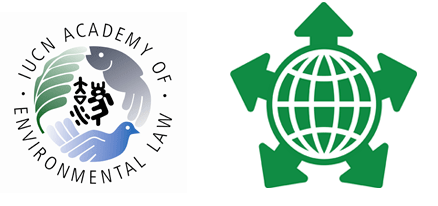Event Title
Indigenous Knowledge and Environmental Management: An Australian Case Study
Location
Room 460
Start Date
2-7-2012 1:30 PM
End Date
2-7-2012 2:50 PM
Description
Australia is the most megadiverse developed nation in the world supporting 10% of the world’s biodiversity.[1] While this biodiversity plays a significant role in climate change mitigation[2], there has been much pressure placed on biodiversity in Australia due to the agricultural sector’s land clearing practices[3], poor land management leading to destructive fires, and poor water management. When one realises that the majority of land in Australia is managed by farmers, graziers, Indigenous communities, and other private land managers,[4] the importance of engaging landholders in natural resource management becomes apparent. Various programs have been established to abate land clearing practices and encourage the adoption of environmental management plans thereby conserving biodiversity.
One such program is the Environmental Stewardship Program ‘that focuses on the long-term protection, rehabilitation and improvement of targeted environmental assets on private land or impacted by activities conducted on private land, including freehold and leasehold’.[5] The Minister for the Environment, Water, Heritage and the Arts and the Minister for Agriculture, Fisheries and Forestry jointly administer this program.[6]
What has become apparent through this Program is the importance of engagement with Indigenous peoples and their ecological knowledge and practices. Specific examples will demonstrate how such knowledge has been utilised in land management and improvement. One such example lies in the cattle grazing practices of the Jarlmadangah Burru people in the Kimberley region of Northwestern Australia. This paper considers the outcomes of the Caring for Our Country Review Indigenous Forum held in May 2011 and the need to address the issues of protecting and accessing Indigenous ecological knowledge for the ongoing environmental management of Australian land and waterways and associated biodiversity.
[1] Conservation of Australia’s Biodiversity, Department of Environment, Water, Heritage and the Arts, at accessed 17/5/10
[2] G.J Nabuurs, O. Masera, K. Andrasko, P. Benitez-Ponce, R. Boer, M. Dutschke, E. Elsiddig, J. Ford-Robertson, P. Frumhoff, T. Karjalainen, O. Krankina, W.A. Kurz, M. Matsumoto, W. Oyhantcabal, N.H. Ravindranath, M.J. Sanz Sanchez, X. Zhang, 2007: Forestry. In Climate Change 2007: Mitigation. Contribution of Working Group III to the Fourth Assessment Report of the Intergovernmental Panel on Climate Change [B. Metz, O.R. Davidson, P.R. Bosch, R. Dave, L.A. Meyer (eds)], Cambridge University Press, Cambridge, United Kingdom and New York, NY, USA.
[3] Australian Bureau of Statistics, 1370.0 - Measuring Australia's Progress, 2002, Land use: Looking more closely, updated 20 January 2006, at accessed 17/5/10
[4] 77% according to the Australian Government, Environmental Stewardship Program at < http://www.marketbasedinstruments.gov.au/DesigningMBIs/Othertypesofincentives/Stewardshipandecosystemservices/EnvironmentalStewardshipProgram/tabid/243/Default.aspx> accessed 15/2/2012
[5] Ibid.
[6] Ibid.
Indigenous Knowledge and Environmental Management: An Australian Case Study
Room 460
Australia is the most megadiverse developed nation in the world supporting 10% of the world’s biodiversity.[1] While this biodiversity plays a significant role in climate change mitigation[2], there has been much pressure placed on biodiversity in Australia due to the agricultural sector’s land clearing practices[3], poor land management leading to destructive fires, and poor water management. When one realises that the majority of land in Australia is managed by farmers, graziers, Indigenous communities, and other private land managers,[4] the importance of engaging landholders in natural resource management becomes apparent. Various programs have been established to abate land clearing practices and encourage the adoption of environmental management plans thereby conserving biodiversity.
One such program is the Environmental Stewardship Program ‘that focuses on the long-term protection, rehabilitation and improvement of targeted environmental assets on private land or impacted by activities conducted on private land, including freehold and leasehold’.[5] The Minister for the Environment, Water, Heritage and the Arts and the Minister for Agriculture, Fisheries and Forestry jointly administer this program.[6]
What has become apparent through this Program is the importance of engagement with Indigenous peoples and their ecological knowledge and practices. Specific examples will demonstrate how such knowledge has been utilised in land management and improvement. One such example lies in the cattle grazing practices of the Jarlmadangah Burru people in the Kimberley region of Northwestern Australia. This paper considers the outcomes of the Caring for Our Country Review Indigenous Forum held in May 2011 and the need to address the issues of protecting and accessing Indigenous ecological knowledge for the ongoing environmental management of Australian land and waterways and associated biodiversity.
[1] Conservation of Australia’s Biodiversity, Department of Environment, Water, Heritage and the Arts, at accessed 17/5/10
[2] G.J Nabuurs, O. Masera, K. Andrasko, P. Benitez-Ponce, R. Boer, M. Dutschke, E. Elsiddig, J. Ford-Robertson, P. Frumhoff, T. Karjalainen, O. Krankina, W.A. Kurz, M. Matsumoto, W. Oyhantcabal, N.H. Ravindranath, M.J. Sanz Sanchez, X. Zhang, 2007: Forestry. In Climate Change 2007: Mitigation. Contribution of Working Group III to the Fourth Assessment Report of the Intergovernmental Panel on Climate Change [B. Metz, O.R. Davidson, P.R. Bosch, R. Dave, L.A. Meyer (eds)], Cambridge University Press, Cambridge, United Kingdom and New York, NY, USA.
[3] Australian Bureau of Statistics, 1370.0 - Measuring Australia's Progress, 2002, Land use: Looking more closely, updated 20 January 2006, at accessed 17/5/10
[4] 77% according to the Australian Government, Environmental Stewardship Program at < http://www.marketbasedinstruments.gov.au/DesigningMBIs/Othertypesofincentives/Stewardshipandecosystemservices/EnvironmentalStewardshipProgram/tabid/243/Default.aspx> accessed 15/2/2012
[5] Ibid.
[6] Ibid.

